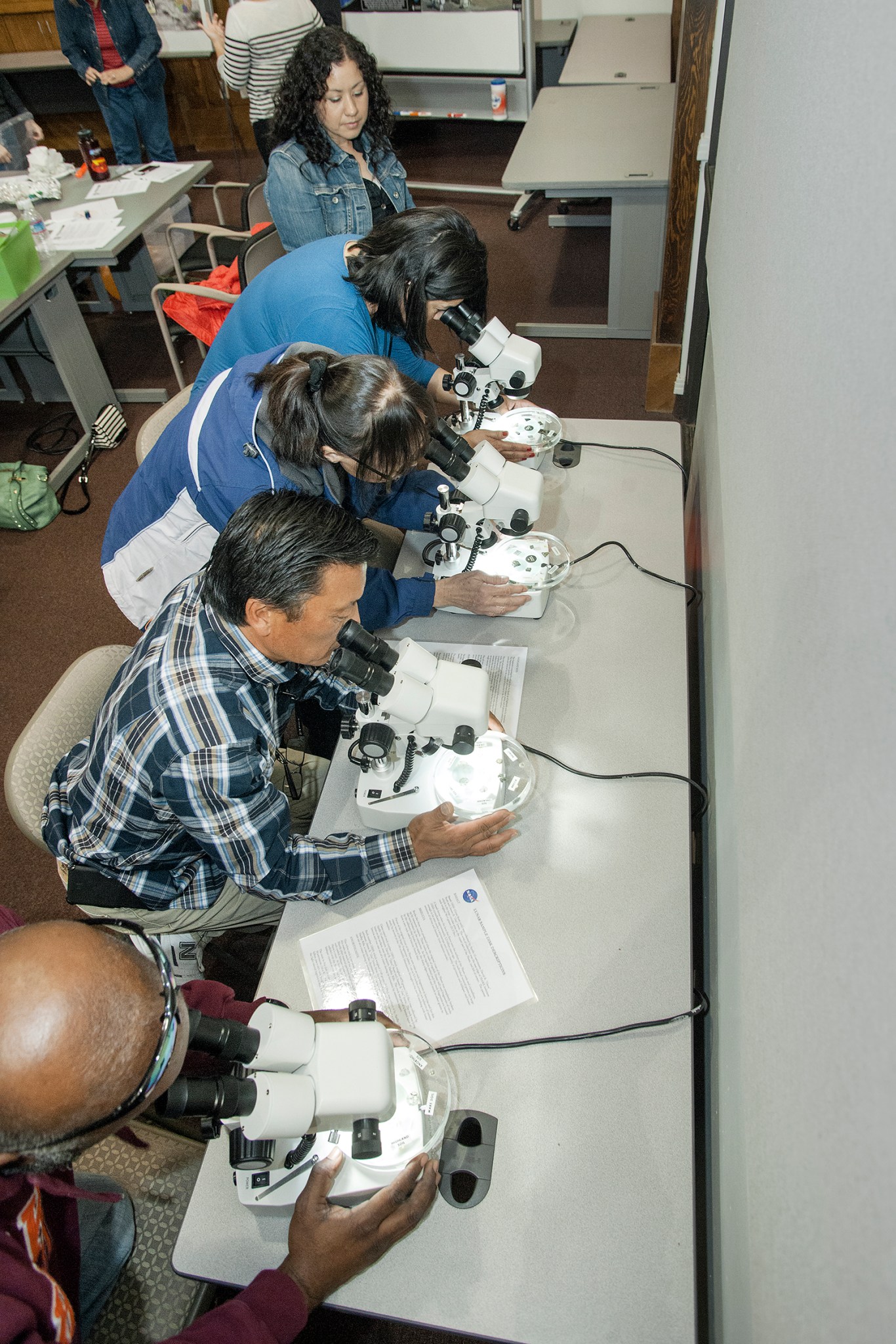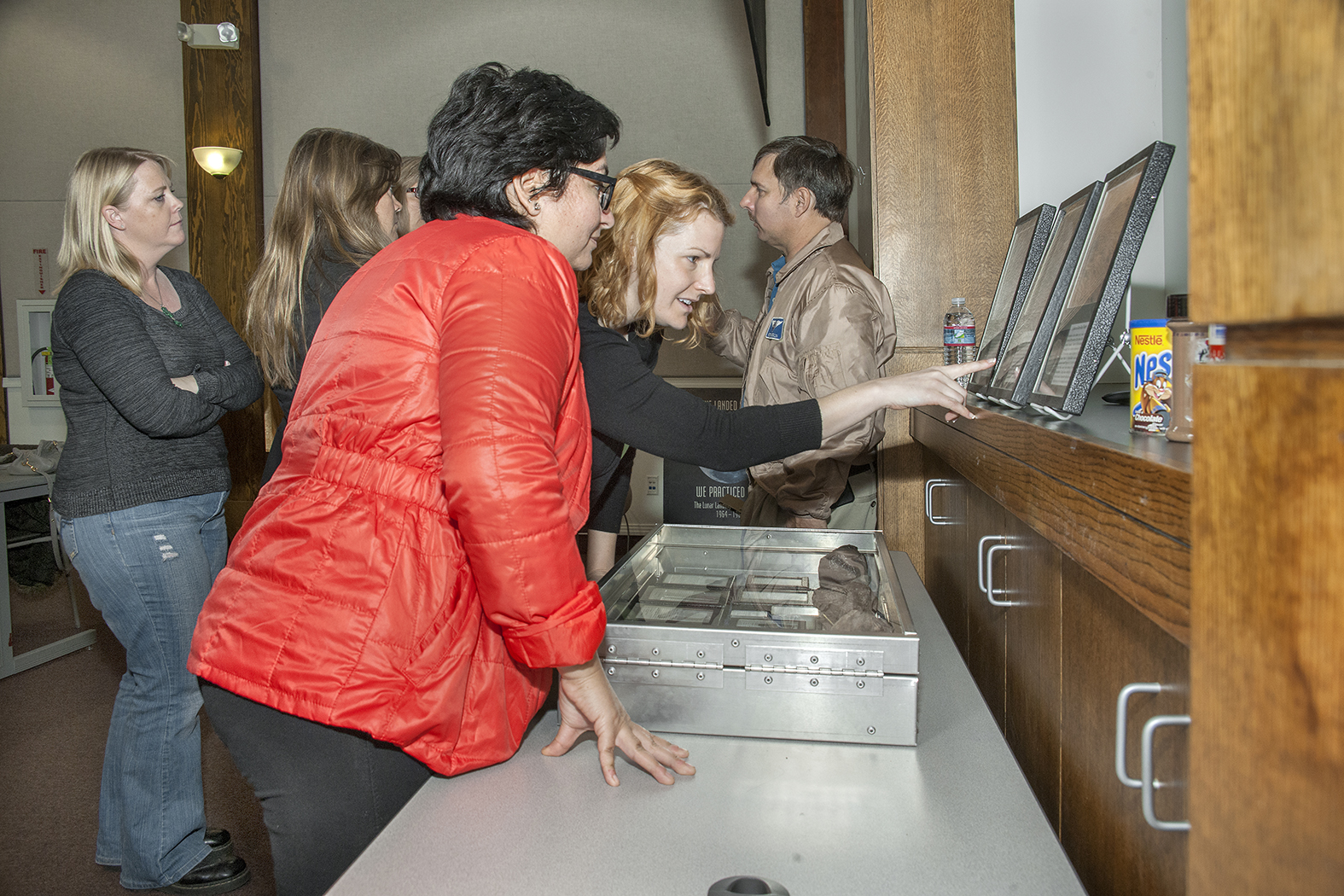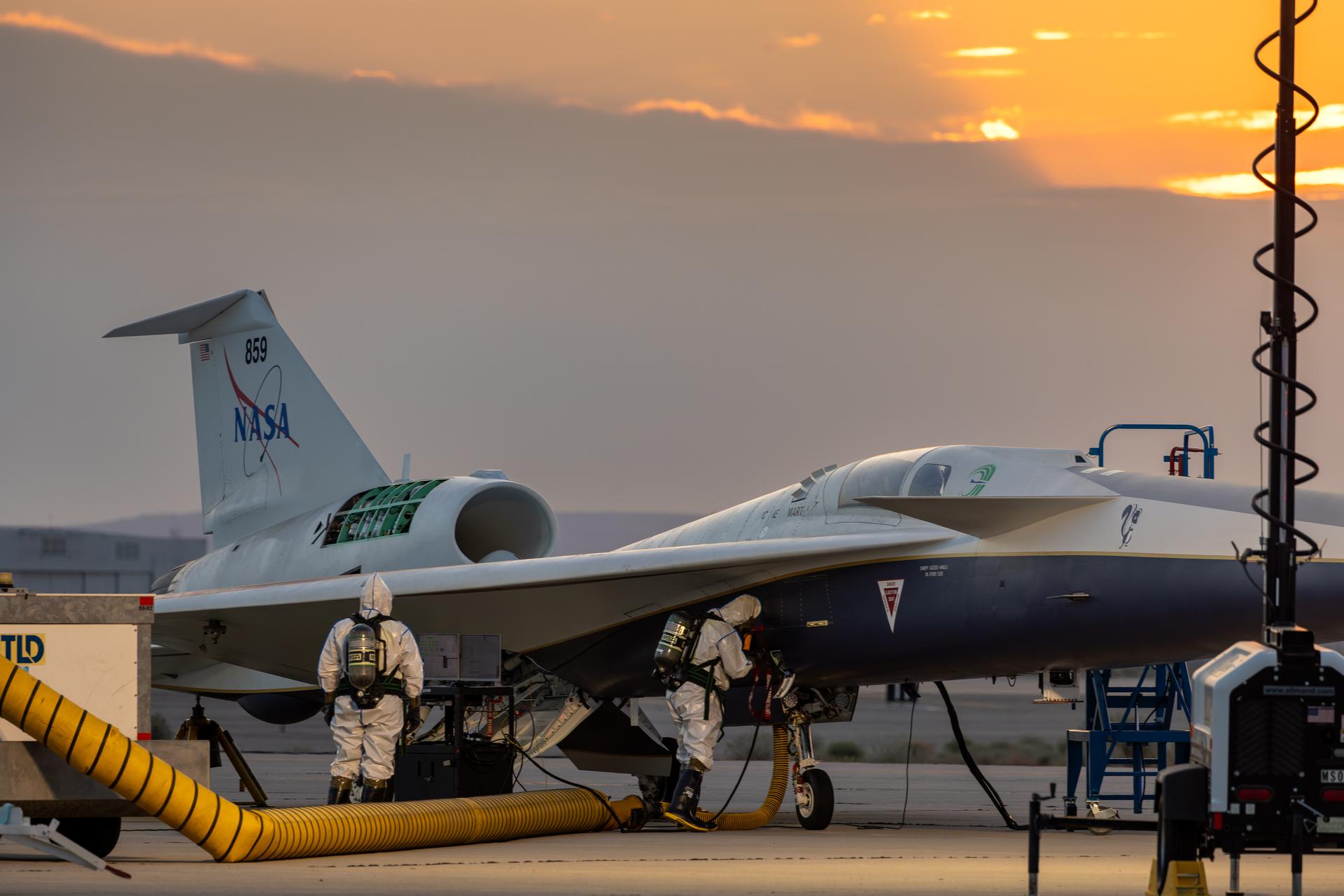A Lunar and Meteorite Disk Certification educator workshop was held at the NASA Armstrong Flight Research Center’s Office of Education’s Resource Center located at the AERO Institute in Palmdale, California, on Saturday, Feb. 21.
Twenty-seven regional teachers and one teacher from New York participated in a professional development workshop that was presented by education specialist Barbara Buckner, subject matter expert Peter Merlin and education resource center manager Sondra Geddes.
Having a Lunar and Meteorite Disk Certification, permits educators to submit a request to borrow the lunar or meteorite disk for use in their classroom. Equipped with guides and workshop knowledge, teachers can share these small portions of extraterrestrial materials with their students to learn more about the moon and meteorites.
“I am excited to show my students that the elements we study in class are throughout the universe and here are actual fragments of extraterrestrial rocks with the same elements,” stated Joe Vanasco from Walter O’Connell High School. “Then we can explore percent composition and compare that to earth rocks.”
The workshop featured lunar disks with moon rock and soil samples brought back from the historic Apollo missions encapsulated in clear Lucite. During the workshop, teachers engaged in hands-on, standards-based activities for learning about accretion, differentiation, cratering and volcanism.
“Even though the purpose of the workshop was the certification for lunar rocks and meteorites, the workshop provided activities that are relevant to sixth-grade science,” said Geoffrey Langbehn, Summerwind Elementary School. “Specifically, the Lava Layering activity fits nicely with ‘Shaping Earth’s Surface’ in the sixth-grade science curriculum as does the Impact Craters activity. I look forward to implementing both with my students.”
Peter Merlin, a former NASA historian and current strategic communications specialist explained the various types of meteorites and their origin and shared his personal meteorite collection including specimens of the recent Chelyabinsk meteorite fall in Russia. He also discussed the Rosetta mission to orbit and land on a comet.































